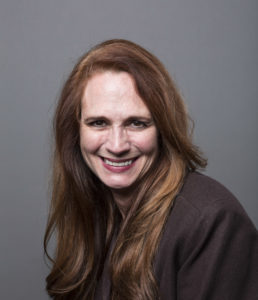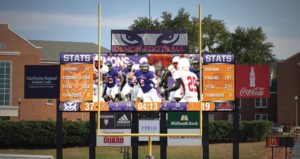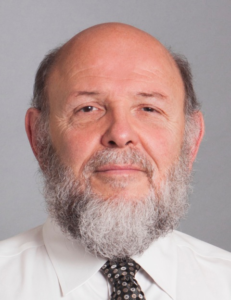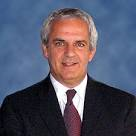Donna Karl Sakelakos Named Director Of Event Services At Ernest N. Morial Convention Center
Donna Karl Sakelakos, CMP, has been named director of event services at the New Orleans Ernest N. Morial Convention Center. In her role as director, she will supervise the planning and execution of all events held at the facility. Karl will head a team of nine event services managers and coordinators who boast an impressive 140 years of experience at the convention center, with three managers serving 31 or more years.
Karl, a veteran of the meetings industry for over 30 years, brings a solid and extensive leadership background to the position,  including over 18 years of professional convention and association management, and eight years of experience in convention sales and client relations.
including over 18 years of professional convention and association management, and eight years of experience in convention sales and client relations.
She most recently served as vice president of event operations for Tradeshow Logic, where she launched the meetings division and grew it to over 18 annual meeting programs.
She previously served as the New Orleans Convention and Visitors Bureau’s vice president of client relations from 2004–2012. In that role, she implemented improvement strategies and tactics on behalf of meeting and convention buyers. Karl proved integral to the tourism industry’s post-Hurricane Katrina recovery efforts: she spearheaded public relations client contacts and re-negotiations; developed disaster protocols in coordination with local and national officials, and raised $2.5 million in sponsorships to host the PCMA Annual Meeting.
Karl began her career in the meetings industry with the American Academy of Pediatrics in Elk Grove Village, IL. Over the course of 18 years, she rose through the ranks to ultimately serve as director, division of convention and meeting services.
Karl earned her Certified Meeting Professional designation in 1992. Over the course of her career, she has served on the board of directors of many leading industry organizations including GMC-PCMA and PCMA Foundation.
Her leadership skills have garnered her many prestigious awards and nominations, including:
•GMC-PCMA Dick Dano Award (Nominated, 2000);
•Meeting Professional International Award – Hall of Fame Association (2001-2002);
•GMC-PCMA Bob Donovan Award Winner – Meeting Planner of the Year (2003);
•Tradeshow Week Green Innovation Award – The Industry’s Top Eco-Leaders (2009);
•PCMA Spirit Award (2009, 2010).
“We are extremely excited to have Donna on our staff as she will give our operational staff a different perspective on managing events. She has been on both sides of an event: event management and event creation. This is a stellar hire for the convention center,” said Bryan Hayden, vice president of operations of the New Orleans Ernest N. Morial Convention Center. “She also has super client relationships throughout the country.”
Daktronics Installing New LED Video Display And Sound System At Harry Turpin Stadium
Daktronics announced the company will design, manufacture and install a new LED video display and audio upgrades for Northwestern State University (NSU) at Harry Turpin Stadium on campus in Natchitoches, Louisiana. The stadium upgrades will be completed and entertaining Demon fans this fall.
“Northwestern State is pleased to continue its partnership, which originated 20 years ago, with the world’s largest and best scoreboard company by installing an updated and greatly enhanced video board at Turpin Stadium,” said NSU Director of Athletics Gregory S. Burke. “Our University, football program and fan base deserve this tremendous upgrade. I cannot wait until our home opener on September 16 to see how it will change the game-day experience for Demon fans and students. What excites me most about this project is the infusion of enthusiasm it will create in our football locker room, as well as among our season ticket holders and fan base.”
The new end zone display will feature a 15HD pixel layout and measure approximately 17 feet high by 54 feet wide. The large digital canvas will provide excellent image clarity and contrast with wide angle visibility to appeal to every seat in the stadium.
“This new video board will be positive on many levels, most notably the impact it will have on the Demon football program and on NSU home football Saturdays,” Burke said. “Recruiting, image and branding will all benefit from this new look. For our fans, based on the configuration of Turpin Stadium, this new video board will make them feel as if they are sitting in their living rooms watching the Demons.”
home football Saturdays,” Burke said. “Recruiting, image and branding will all benefit from this new look. For our fans, based on the configuration of Turpin Stadium, this new video board will make them feel as if they are sitting in their living rooms watching the Demons.”
Capable of variable content zoning, the new LED display can be used to show one large image or it can be divided into multiple windows to show any variety of live video, instant replays, up-to-the-minute statistics, graphics, animations and sponsorship messages.
“We’re excited to continue our long-standing partnership with NSU,” said Andrew Rice, Daktronics sales representative. “The new video display is going to be an amazing addition to their live event productions on game-day, both for the student-athletes and the fans. It will be great to see the completed project and how it helps the university achieve their goals this year.”
Daktronics will also be adding improvements to their audio system, which is integrated with the video and scoring system. The audio upgrades will improve the full-range sound reproduction and help deliver clear and intelligible speech for a powerful audio experience for the fans.
Safety & Security Experts Share Thoughts On IAVM Webinar Panel
Four experts in the field of safety and security took to a panel Thursday to lead an IAVM webinar on Understanding the Risk & Securing Mass Gathering Events. The webinar drew a large audience of 558 listeners and later participants who had several questions to ask of panel members following the 45-minute webinar.
Much of the interest in the webinar was likely drawn from the recent terrorist attack outside the Manchester Arena in the United Kingdom, but suffice to say that safety and security are ongoing hot topics and will continue to be in a time when IAVM President/CEO Brad Mayne, CFE, pointed out that we no longer live in a “not if, but when” time, but actually now reside in the “when” regardless of our geographical location.
“The British continue to investigate whether the incident there was a lone wolf or terrorist cell,” said panelist Bill Flynn, GARDA Risk Management. “Due to the sophistication of the device it suggests the possibility of a network. He targeted two main egress points to minimize the detection and maximize the casualties.” Twenty-two were killed in the attack and dozens injured.
Flynn noted a shift from centrally coordinated attacks in homegrown situations to lone wolf attacks, citing that there were 16 homegrown violent terrorist arrests last year in the United States. Flynn added that last year 423 incidents took place domestically and internationally with close to 50 percent of those happening within 30 miles of where the attacker lived.
“No community is immune,” he said.
IAVM veteran Russ Simons, Venue Solutions Group, spoke on Threat, Risk and Vulnerability Assessments.
“Our venues have emergency plans,” he said, “but they are not revisited regularly. We underestimate the opponent’s skill, intelligence and cunning.
Simons noted that in 2015 there were more than 1,600 reported bomb threat incidents and more than 400 actual bombings that year.
“All of these assessments are critical to do,” he said. “Without doing them, you are setting yourself up for something bad to happen. And it will happen in some form or another.”
Al Shenouda, City Shield LLC, who along with Flynn has been working closely with IAVM on the Emergency Management Safety & Security Initiative (EMSSI) for convention centers, spoke about the importance of public and private partnerships to counter the foe.
“It takes a collaboration of multiple stakeholders to do information sharing,” he said. “Think of everyone as good security for soft targets.”
Andy Jabbour, Gate 15, wrapped up the webinar by striking a parallel between buying insurance and the uncertainty that venues face going forward with respect to safety and security.
“Like insurance, risk assessment can’t be ‘one and done,'” Jabbour said. “You understand the threat environment. Like insurance, you pay every month.”
Before fielding a series of questions from webinar attendees, Shenouda closed the panel comments by noting “We’ve had attacks and thwarted attacks in every state.”
Every state. It is something that should sink in for every venue manager if it has not already.
100+ WOMEN of IAVM, THANK YOU
THANK YOU for being rock stars and always supporting your IAVM Foundation.
For 35 years the Foundation has been the funding arm for industry initiatives. One such initiative is the 100+ WOMEN of IAVM | DONATE 100+, which was created to expose more women to IAVM events. On April 1st you were given the opportunity to rally around this initiative and once again you have risen to the occasion.
“Watching ALL members rally around this initiative has been so inspiring,” said Kerry Painter, Assistant General Manager, Cox Business Center and co-Champion of the initiative. “It is gratifying to know six women’s professional lives will be impacted because of your donations. This is IAVM’s ‘Inspiring leaders and creating connections’ at its best. Thank you for donating and becoming one of the 100+ Women of IAVM!”
To date we have 64 donors. With the campaign ending on June 30th, we are confident we will finish strong.
“On behalf of the Board of Trustees, I extend to all members THANK YOU for your continued support of your IAVM Foundation,” said Board of Trustee Chair, Bob Hunter. “Helping us achieve our mission of educating members through initiatives such as the 100+ WOMEN OF IAVM is a tremendous testament to how much our industry gives back and supports each other.”
Frank Russo, CFE: One Member, One Vote Is Simply The Right Thing To Do
Frank Russo, CFE, executive vice president of Spectra Venue Management and an industry veteran who could fill a volume of books with personal stories about his beloved profession, believes that simplicity is the rule of the day when it comes to the One Member, One Vote currently underway and being voted on by eligible IAVM members.
“I support the One Member, One Vote because it is the right thing to do,” Russo said. “If you are a dues-paying member in good  standing, you have the right to be heard on the various issues affecting our association.
standing, you have the right to be heard on the various issues affecting our association.
“While it’s that simple for me, I know a number of our members have linked this issue to the concern over whether we will become a Trade Association rather than remain a Professional one. Part of this argument has to do with who is eligible to be a Professional Member, and this is where I have some concerns.
“Just using myself as an example, I have managed the Hartford Civic Center, the Target Center and the Jacob Javits Convention Center and now I am a senior executive with a company that privately manages 145 venues. I have helped develop our Body Of Knowledge, helped write two books, served as an instructor at the Venue Management School at Oglebay and the Graduate Institute and chaired the Board of Education, and yet I am not eligible to be a Professional member. And this is not about me because there are so many others who have done far more than I have for the IAVM that are in the same boat.”
The initiative follows extensive study, review and open discussion over the last two years, at which point the IAVM Board of Directors voted unanimously to bring forward proposed changes to the bylaws that would make the Association more inclusive and diverse in its decision making. As a means to incorporate the perspective of all IAVM members, these changes would allow every member of IAVM equal opportunity to engage in the Association through the right to vote. These proposed changes must be approved by two-thirds of the current voting members of IAVM.
Russo said it is important to first get the vote passed before tackling other concerns and issues that will result from an approved ballot.
“One Member, One Vote, if passed, will add a number of new Professional members who are nowhere near as knowledgeable nor qualified as many of our most valuable and legendary members who will continue to be relegated to mere Allied status,” he said. “Let’s fix one problem at a time, though. Vote “yes’ on One Member, One Vote and then let’s tackle the issue of who deserves to be a Professional member.”
The voting period is open now so please look in your inbox for the ballot if you have not already cast your vote.
Do you want to receive a Front Row News weekly digest?
Categories
- Allied (861)
- Architecture (147)
- Arenas (747)
- Career (897)
- Convention Centers (895)
- Education (623)
- Events (1,544)
- Food & Beverage (193)
- Foundation (113)
- Guest Experience (1,496)
- Industry News (2,270)
- Leadership (1,888)
- Marketing (150)
- Membership (2,000)
- Music (213)
- Performing Arts Centers (454)
- Professional Development (409)
- Research (127)
- Safety & Security (442)
- Sports (763)
- Stadiums (608)
- Student (159)
- Technology (516)
- Ticketing (92)
- Touring (82)
- Trends (364)
- Uncategorized (743)
- Universities (218)
- Video (25)
- Young Professional (198)
Twitter Feed
- Twitter feed loading
Recent Posts
- Venuworks and ATG Entertainment Selected to Manage Fresno Convention and Entertainment Center
- Seattle Convention Center Announces Strategic Leadership Appointment and Growth Initiatives for 2026
- Peggy Daidakis Humbly Made Convention Center History
- Welcome to Our Newest Members
- New Member Benefit! IAVM Partners with Advantage Training to Elevate Staff Readiness and Guest Experience
Categories
- Allied
- Architecture
- Arenas
- Career
- Convention Centers
- Education
- Events
- Food & Beverage
- Foundation
- Guest Experience
- Industry News
- Leadership
- Marketing
- Membership
- Music
- Performing Arts Centers
- Professional Development
- Research
- Safety & Security
- Sports
- Stadiums
- Student
- Technology
- Ticketing
- Touring
- Trends
- Uncategorized
- Universities
- Video
- Young Professional
Archives
- December 2025
- November 2025
- October 2025
- September 2025
- August 2025
- July 2025
- June 2025
- May 2025
- April 2025
- March 2025
- February 2025
- January 2025
- December 2024
- November 2024
- October 2024
- September 2024
- August 2024
- July 2024
- June 2024
- May 2024
- April 2024
- March 2024
- February 2024
- January 2024
- December 2023
- November 2023
- October 2023
- September 2023
- August 2023
- July 2023
- June 2023
- May 2023
- April 2023
- March 2023
- February 2023
- January 2023
- December 2022
- November 2022
- October 2022
- September 2022
- August 2022
- July 2022
- June 2022
- May 2022
- April 2022
- March 2022
- February 2022
- January 2022
- December 2021
- November 2021
- October 2021
- September 2021
- August 2021
- July 2021
- June 2021
- May 2021
- April 2021
- March 2021
- February 2021
- January 2021
- December 2020
- November 2020
- October 2020
- September 2020
- August 2020
- July 2020
- June 2020
- May 2020
- April 2020
- March 2020
- February 2020
- January 2020
- December 2019
- November 2019
- October 2019
- September 2019
- August 2019
- July 2019
- June 2019
- May 2019
- April 2019
- March 2019
- February 2019
- January 2019
- December 2018
- November 2018
- October 2018
- September 2018
- August 2018
- July 2018
- June 2018
- May 2018
- April 2018
- March 2018
- February 2018
- January 2018
- December 2017
- November 2017
- October 2017
- September 2017
- August 2017
- July 2017
- June 2017
- May 2017
- April 2017
- March 2017
- February 2017
- January 2017
- December 2016
- November 2016
- October 2016
- September 2016
- August 2016
- July 2016
- June 2016
- May 2016
- April 2016
- March 2016
- February 2016
- January 2016
- December 2015
- November 2015
- October 2015
- September 2015
- August 2015
- July 2015
- June 2015
- May 2015
- April 2015
- March 2015
- February 2015
- January 2015
- December 2014
- November 2014
- October 2014
- September 2014
- August 2014
- July 2014
- June 2014
- May 2014
- April 2014
- March 2014
- February 2014
- January 2014
- December 2013
- November 2013
- October 2013
- September 2013
- August 2013
- July 2013
- June 2013
- May 2013
- April 2013
- March 2013
- February 2013
- January 2013
- May 2012
- March 2012
- December 2011
- November 2011
- October 2011
Recent Comments
- Frank Bradshaw, Ph.D., CVE on John Meyer, CVE, a Tireless Advocate of Certification for Venue Professionals, Has Died
- Neil Sulkes on Hilary Hartung, Friend to Many in Venue Marketing, Has Left Us
- Jason Parker, CVE on The Devastation of Hurricane Helene and How We Can Support One Another
- Larry Perkins on Touhey Testifies Against Speculative Ticketing Before Congressional Subcommittee
- Peter Secord on Major Players for Planned Elkhart Amphitheater Were in the Mix at VenueConnect

